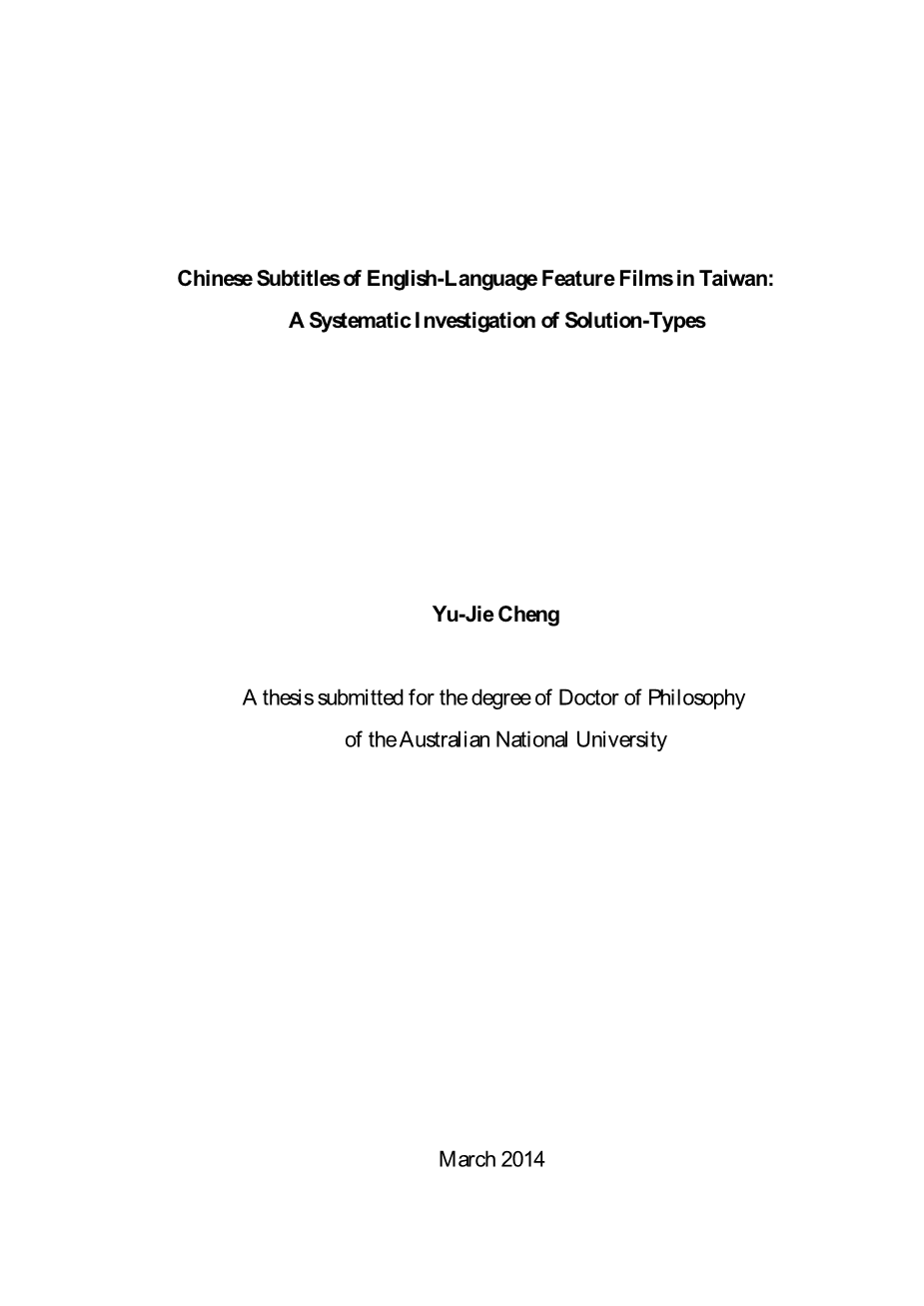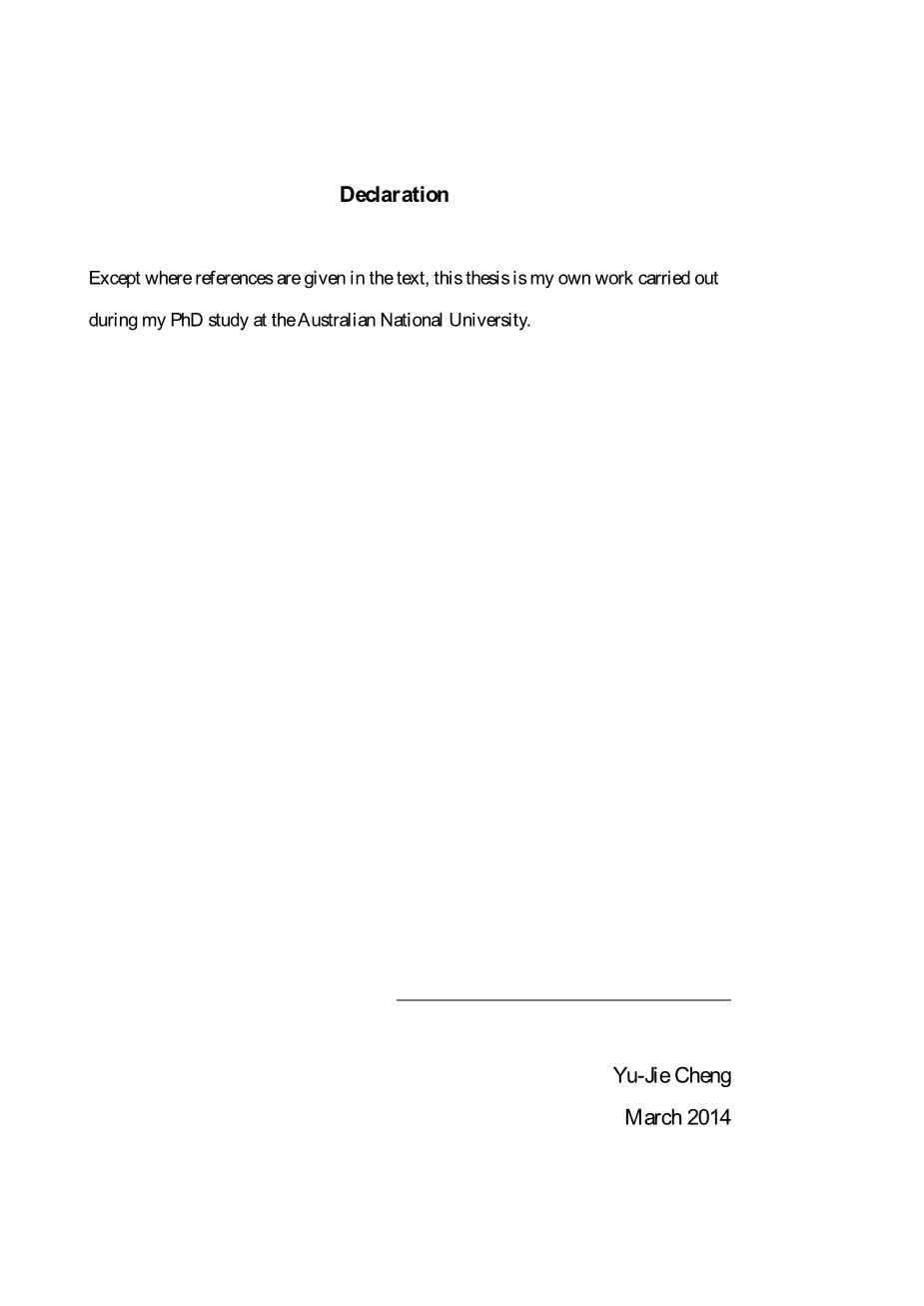关联理论视角下的美剧字幕翻译策略—以《了不起的麦瑟尔女士》为例外文翻译资料
2022-12-24 16:55:39


英语原文共 393 页,剩余内容已隐藏,支付完成后下载完整资料
文献翻译
出处:Yu-Jie Cheng .Chinese Subtitles of English-Language Feature Films in Taiwan: A Systematic Investigation of Solution-Types[D]. Australian National University,2014
原文:
Chinese Subtitles of English-Language Feature Films in Taiwan: A Systematic Investigation of Solution-Types
The growing prominence of audiovisual translation (AVT) is inevitable with globalisation and the development of multimedia technology. Audiovisual products are ubiquitous in our daily lives and have become one of the major ways people come in contact with foreign languages and cultures. The consumption of translated audiovisual products has surpassed that of traditional translated products such as books. Because of the number of people they reach and the large amount of translated products distributed worldwide, AVT is the most proliferated translational activity of our time (Diacute;az Cintas 2004, p. 50). The prevalence of translated audiovisual products has drawn a considerable amount of scholarly attention and more and more research has started to focus on this type of translation, addressing various kinds of difficulties involved in the process of translation and the impact AVT has on our culture and society.
The present study will focus on interlingual subtitling,as opposed to intralingual subtitling(see 2.1),which includes translating the verbal elements(see 1.2)in theoriginal audio visual product to a target language(TL).Interlingual subtitling differs from the traditional idea of translation–from written source text(ST)to written target text(TT).The transference is from an ST which consists not only of verbal information but also non-verbal information from audio and visual channels,to a written TT which is constrained by the limited time and space on the screen(see 2.3).In traditional translation,the difficulty lies mainly in linguistic issues,while subtitling requires consideration not only of the linguistic factors but also the non-linguistic elements involved in communication,along with the constraints and the target audience‟s processing effort.Different aspects of subtitling and the way they influence a subtitler‟s decision-making are worth investigating,and it is the purpose of this study to explore how verbal elements in the ST are translated when different levels of constraints are present.
The significance of this project is twofold. Firstly, despite increasing attention on AVT research, most of the research done in this field centres on the European scene (Gambier 2008, p. 14). The language pairs studied are English vs. Spanish, Italian, German and Scandinavian languages; the cultures involved are closely related and the languages all belong to the same alphabetical writing system, wherein “writing is done by means of sound symbols organized in alphabets” (“Alphabet” in Concise Oxford Companion to the English Language, 1998). However, the Chinese culture and language are very different from the English culture and language, and the writing systems are different – Chinese characters are logograms, wherein “writing is done by means of symbols that directly represent ideas or words” (ibid). The challenges involved in subtitling between different writing systems are different from those posed when transferring within the same writing system. Considering this big gap of cultural and language difference between Chinese and English, some strategies applicable to translate between English and European languages may not be appropriate for translating between English and Chinese. For example, direct copying of English words into the Chinese subtitle is rarely seen, especially in the officially released versions of subtitled films and TV programmes (the amateur, fans-subbed versions distributed freely on the internet may have more English words in their Chinese subtitles). Although the daily conversation of Taiwanese people has started to involve more English words/phrases, the appearance of English words in Chinese subtitles is not accepted by most Taiwanese viewers. Generally speaking, viewers of the older generation have little knowledge of English, so the English words shown on the screen do not mean much to them. Even though viewers of the younger generation have more knowledge of English, it is hard to read and comprehend English words in the subtitle because of the fleeting nature of subtitles. In addition, a person‟s name in English is usually copied directly into, say, Spanish subtitles, but we do not find that in Chinese subtitles. Names in alphabetical languages are transcribed into Chinese (see 5.4.2). As most Taiwanese viewers do not know how to pronounce these names, it will be hard to read them. Direct copying of names in a foreign alphabet is seldom used in any kind of translation in Taiwan. Moreover, culture-bound elements and humour are expected to be handled differently, as Taiwanese are less familiar with American/English culture than Europeans. The average standard of English comprehension among the Taiwanese audience is also far lower than that among the European audience.2 A cultural reference in a film may be familiar to the European audience but not to the Taiwanese audience, and thus a direct transfer may not be applicable for the Taiwanese audience. All these issues will make the subtitling situation different, as the target audience‟s knowledge of the source culture (SC) and the cultural relatedness between the source language (SL) society and the TL society are believed to be the major factors affecting a translator‟s decision.
The other aspect of the significance of this project is that no large-scale systematic descriptive research concerning Chinese subtitles has been conducted so far, and there is undoubtedly a need for it. Since 1989, Delabastita (1989 amp; 1990) has urged translation scholars to extend the descriptive pot
剩余内容已隐藏,支付完成后下载完整资料
资料编号:[24754],资料为PDF文档或Word文档,PDF文档可免费转换为Word




